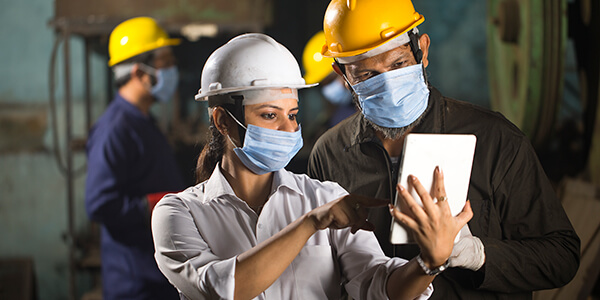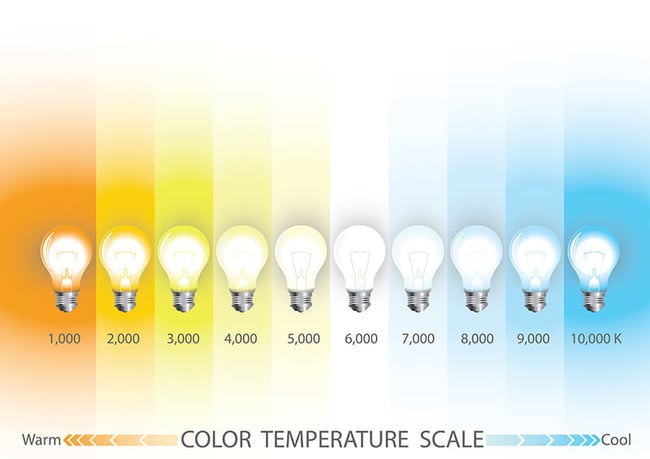
When it comes to the lighting in industrial facilities, decision-makers may subscribe to the “if it ain’t broke, don’t fix it” school of thought.
Sure, LED lights for industrial use can create major energy savings, but that may not be enough for an ESCO or contractor to close the deal. Why? Because we don’t talk enough about the risks of leaving outdated lighting in place.
We’re going to fix that. In this blog (the first of two), I'll be talking about the risks outdated lighting can pose and how it impacts employee health, productivity, facility safety, and even business growth. Then in part two, we’ll dive deep into the benefits — beyond energy savings — of upgrading LED lighting for industrial use.
Health and Safety Risks from Non-LED Industrial Lighting
Want to know somebody who has been talking about the risks of outdated lighting? The facility’s safety officer. Odds are good that this person (if they’re diligent in their role) has already been beating the drum about their workplace’s lighting.
If they haven’t made much headway, it may be because they need the right information to convince higher-ups. Here are some of the risks their bosses should consider:
Risk of Injury from Poor Lighting
When they can’t see what they are doing, employees are much more likely to get injured. They may not be able to clearly see their own hands near machinery. Shadows can keep them from seeing sharp objects or the edges of platforms or walkways — or from easily seeing their way up and down stairwells. Poor light is a daily danger to them and a liability risk for the company.
Risk from Hazardous Older Fixtures
Metal halide lamps, used in high bay fixtures in warehouses and factories, may just burn out and need to be replaced. But sometimes rather than burn out, the tube inside these lamps explodes. If the fixture is open, the employees or flammable materials below can be showered with molten glass, potentially leading to serious injury or fire.
Risk from Incorrect Lighting Temperature
The wrong temperature of light is just as much of an issue as too little. Warmer lights can make employees sleepy. Cooler lights in the 5,700K-6,000K range are considered conducive to alertness and productivity. But they can also be too harsh for all day, causing eye irritation or disruption to employee’s nighttime sleep. Either way, employees are more likely to get injured on the job. In medical or laboratory settings, the wrong temperature of light can lead to potentially dangerous inaccuracies.

Risk to Manufacturing Quality Assurance
In manufacturing environments, poor lighting can lead to a less-than-thorough quality assurance process. Defects can be missed, needed parts can be overlooked, or inspections can’t be done well.
Risk of Eye Strain
Both too-low and too-bright light can cause eye strain. Not only does this impair productivity, it can also result in a lot of health issues like blurred or double vision (which is not exactly a safe situation in industrial settings), headaches, and back issues.
Compliance Risks and OSHA Workplace Lighting Requirements
Because lighting in the workplace impacts the safety of workers, the Occupational Safety and Health Agency (OSHA) requires companies to comply with regulations or face penalties.
For industrial facilities, upgrading to the right intensity and temperature of light isn’t just a matter of employee health, safety, and productivity – it can keep the facility compliant with these regulations. OSHA sets minimum requirements for common commercial installations in foot-candles of illumination or lux levels:
- Warehouses, walkways, and exits: 100 lux
- Factories and workshops: 750 lux
- Warehouse loading bays: 300–400 lux
- Warehouse aisles: 100–200 lux
Non-compliance with OSHA workplace lighting requirements can lead to a citation and a hefty fine the next time an inspector comes through.
It’s worth noting that OSHA is currently considering setting a threshold for workplace lighting color temperature. Anything that is a certain percentage above 5,000K may be considered too bright for OSHA compliance. Industrial facility decision makers should be looking ahead now. They don’t want to be racing to upgrade their lighting systems in a few years under a compliance deadline or threat of penalty.
For businesses thinking ahead, it’s worth noting that many Litetronics LED industrial lighting products already fall within the color temperature ranges OSHA is considering.
Business Growth Risks Due to Outdated Lighting Systems
Most industrial buildings were designed when the electricity power demand was lower. But the number of circuits that seemed like enough 30 years ago … well, they just can’t provide the power for a growing business today.
Clinging to older fixtures can limit the new equipment a business is able to bring in or the number of outlets they can add because of the huge strain that inefficient lighting puts on the facility's power grid. This heavy drain on the facility’s energy automatically sets up financial and physical barriers to business development and innovation.
Next, the Good News About LED Lights for Industrial Use
The next time you’re sitting across from a decision maker, make sure they understand all the reasons why doing nothing may be setting them up for trouble ahead. And keep reading! Our next post in this series will explore the possible benefits end users can experience by upgrading to LED lighting, beyond just energy savings.
Ready to speak with a Litetronics sales expert about the different top-quality LED lighting can have on your customers’ projects? Get in touch here!
 By: Sam Goodspeed, Principal, iLumen Sales
By: Sam Goodspeed, Principal, iLumen Sales

